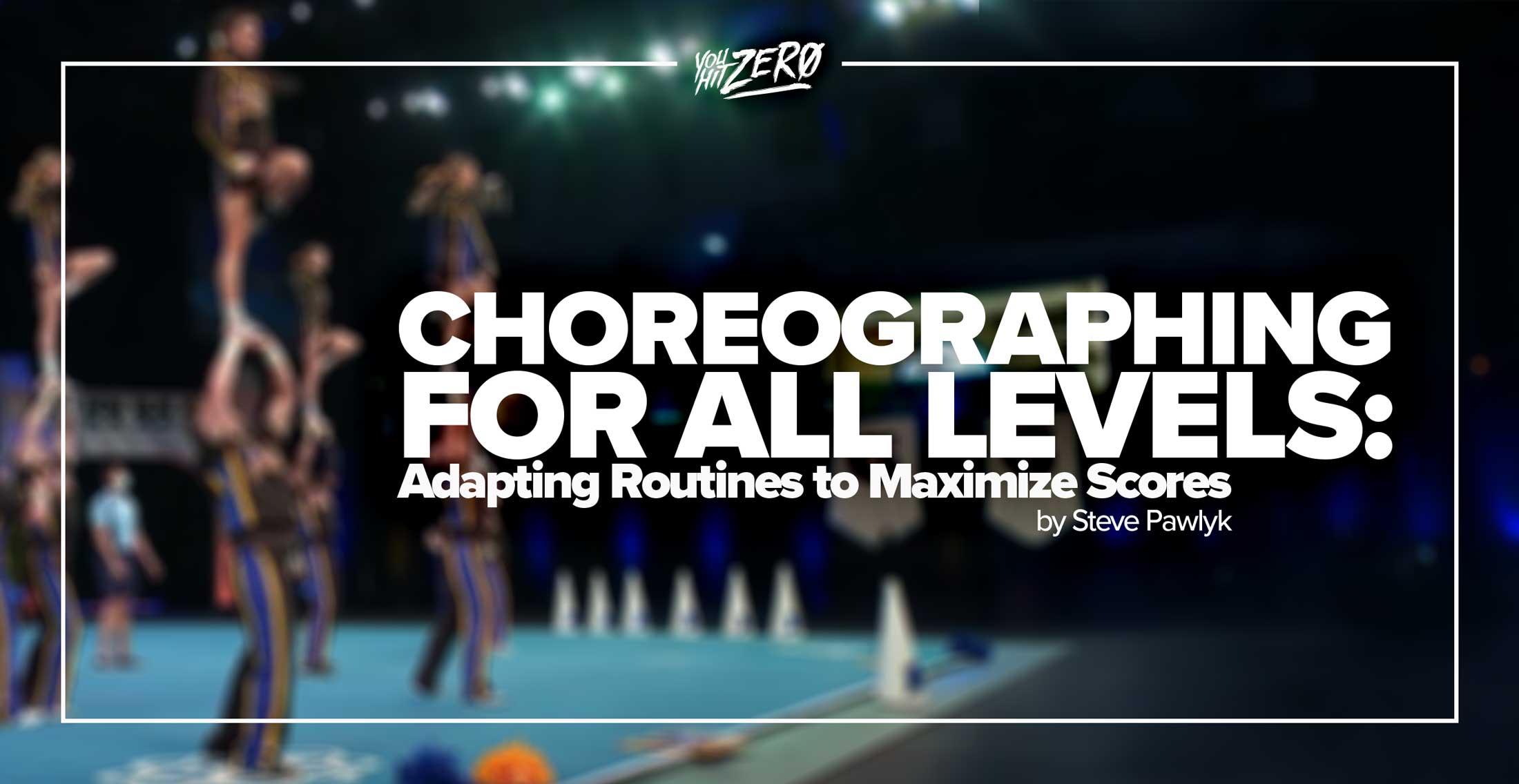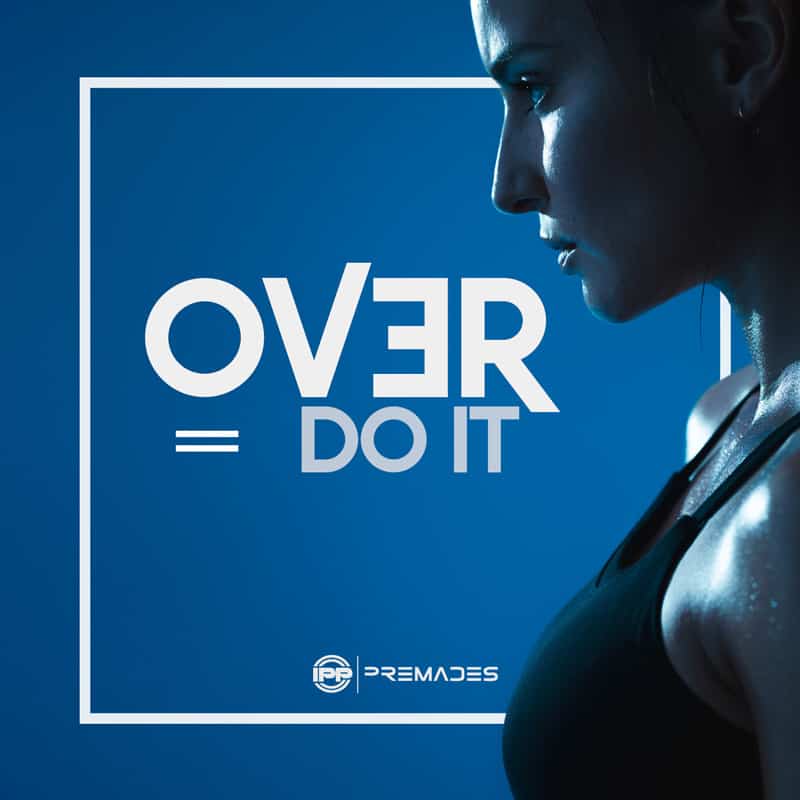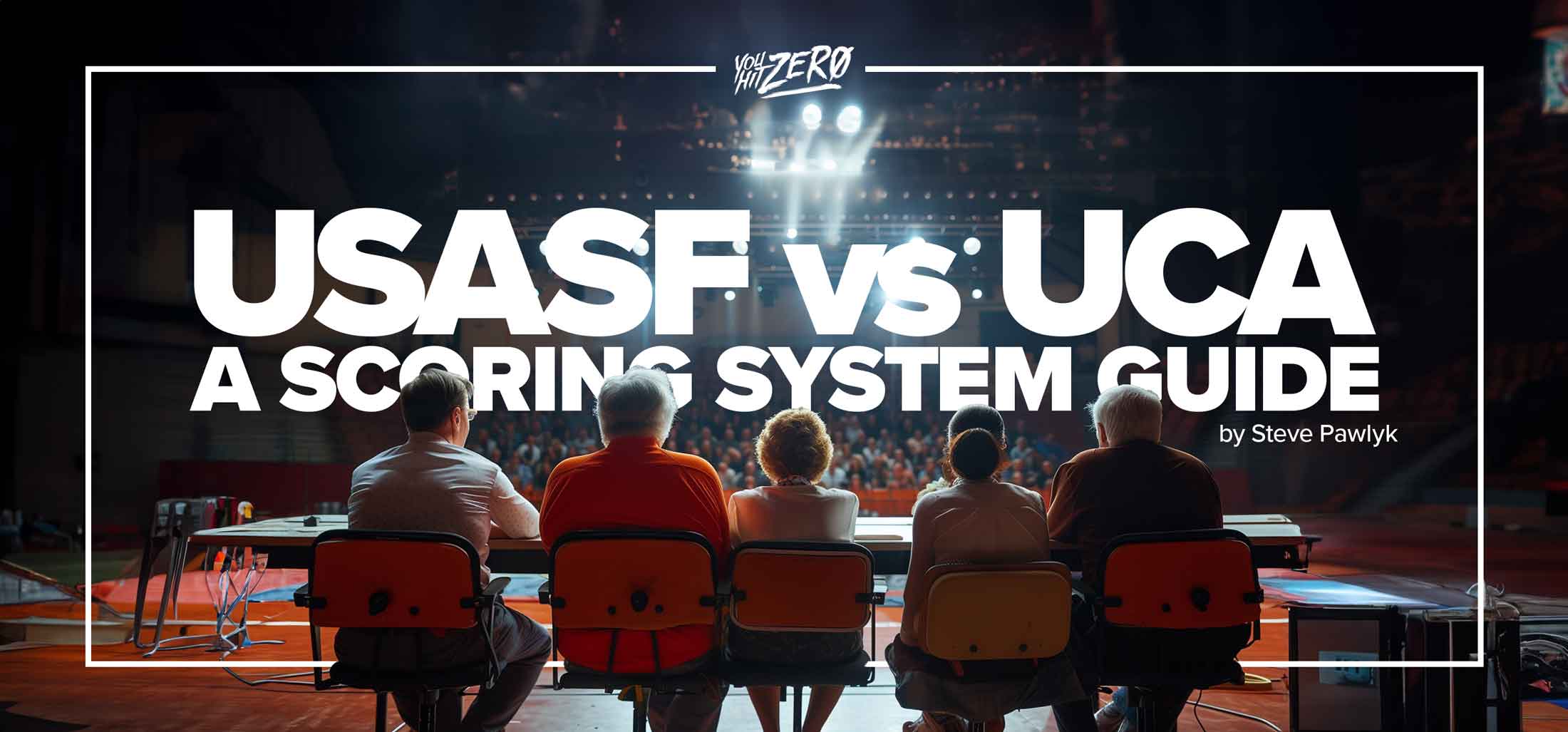By Steve Pawlyk
Published January 3, 2025
As a cheer choreographer, your goal is to create show-stopping routines that not only captivate audiences but also maximize scores at competitions. However, designing routines that align with the abilities of your team while meeting competition requirements can be challenging. This guide will provide you with actionable tips to choreograph routines for any level, ensuring clean execution, creativity, and high scores.
Understanding Scoring Sheets: Start with the End in Mind
To maximize scores, you must first understand what judges are looking for. Familiarize yourself with the scoring sheets for the competition you’re targeting. Here are some key areas to focus on:
- Difficulty: Each level has specific requirements for stunts, tumbling, and pyramids. Ensure your routine includes elements that are challenging but within the team’s capabilities.
- Execution: Clean, well-executed skills score higher than poorly performed advanced skills.
- Creativity: Judges reward unique choreography and innovative transitions. Check out Choreographing Cheer Routines That Stand Out for tips to enhance creativity.
- Formations and Transitions: Fluid movement and visually appealing formations keep routines engaging.
- Showmanship: Energy, facials, and crowd engagement add points in the performance category.
Pro Tip: Keep a checklist of these elements as you plan your routine to ensure you cover all scoring categories.
Breaking Down Routines by Level
Each level in competitive cheerleading has distinct rules and restrictions. Here’s how to adapt routines for different levels:
Level 1:
- Stunts: Stick to basic preps and thigh stands. Avoid extensions or any one-legged stunts above waist level.
- Tumbling: Focus on forward rolls, cartwheels, and back walkovers.
- Pyramids: Use simple connections and build height creatively without exceeding level restrictions.
- Tips: Emphasize clean execution and synchronized movements to impress judges despite simpler skills.
Level 2:
- Stunts: Introduce shoulder-level extensions and single-leg stunts at waist level.
- Tumbling: Include back handsprings and round-off back handspring combinations.
- Pyramids: Incorporate more intricate connections and low-height transitions.
- Tips: Add dynamic transitions to keep the routine exciting without compromising execution.
Level 3:
- Stunts: Execute one-legged extensions and start introducing twisting dismounts.
- Tumbling: Add aerials, punch fronts, and multiple back handsprings.
- Pyramids: Use braced flips or rolls with proper spotting.
- Tips: Focus on synchronization in stunts and tumbling to highlight team precision. For tips on ensuring synchronization, read Guide to Syncing Your Cheer Music with Your Choreography.
Level 4:
- Stunts: Include extended one-legged stunts with single twisting transitions.
- Tumbling: Incorporate layouts, standing tucks, and front handspring step-outs.
- Pyramids: Add high-level braced flips and creative inversions.
- Tips: Ensure safety by building strong bases and thorough progressions during training.
Level 5 & 6:
- Stunts: Showcase elite-level stunts with double twisting dismounts and advanced transitions.
- Tumbling: Add fulls, doubles, and standing back tucks.
- Pyramids: Execute high-energy pyramids with multiple flipping and twisting elements.
- Tips: Prioritize seamless transitions and unique choreography to stand out in a competitive field.
Creative Ideas for Routines
Here are some ways to make your routine stand out while maximizing scores:
- Unique Transitions:
- Use tumbling passes to transition into stunts.
- Incorporate roll-offs and ripple effects for visual interest.
- Layered Formations:
- Create depth by layering flyers at different heights.
- Use levels within formations (e.g., dancers on the ground, bases standing, flyers elevated).
- Music Synchronization:
- Choreograph stunts and tumbling to hit major beats in the music.
- Use sound effects to emphasize high-energy moments. For help with syncing music and choreography, see Guide to Syncing Your Cheer Music with Your Choreography.
- Themed Choreography:
- Develop routines around a theme to enhance storytelling.
- Match motions and stunts to the mood of the music.
- Visual Elements:
- Include props like poms or signs for additional flair.
- Use spacing and movement to create eye-catching visuals from every angle.
Tips for Balancing Difficulty and Execution
While ambitious routines can score well, poor execution can cost you. Here’s how to strike the right balance:
- Focus on Fundamentals:
- Prioritize perfecting basic skills before adding difficulty.
- Clean lines and tight motions are just as important as advanced stunts.
- Progressions:
- Build up to more challenging skills gradually to ensure athlete safety.
- Practice new skills in sections before integrating them into the full routine.
- Consistency:
- Rehearse with a focus on performing cleanly every time.
- Use video analysis to identify and fix weak areas. Check out 5 Proven Tips for Cheerleaders to Memorize Choreography to help your team retain their routines efficiently.
- Adjust Based on Feedback:
- Conduct mock performances and ask for feedback from experienced coaches.
- Modify skills or transitions that frequently result in deductions.
Adapting your choreography to align with the skill level of your team while meeting competition requirements is a balancing act that requires creativity, precision, and strategic planning. By understanding scoring sheets, tailoring routines to the appropriate level, and emphasizing clean execution, you can ensure your team performs at their best and stands out to the judges.
Remember, the most memorable routines aren’t always the hardest ones—they’re the ones executed flawlessly with energy, passion, and a unique touch. For some inspiration and trends you might want to stay on top of, check out Emerging Trends in Cheer Choreography and Music for 2024.
IPP's Premade Mixes are USA Cheer Compliant and customizable! Add Sound FX, swap songs, & more! Add your Team Name to the mix for only $10!










